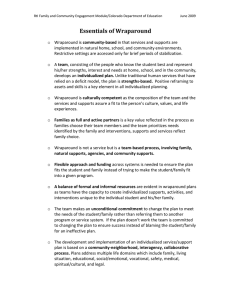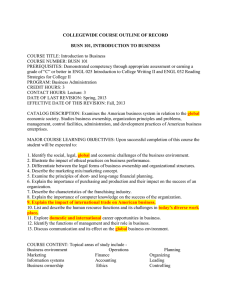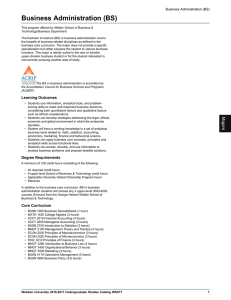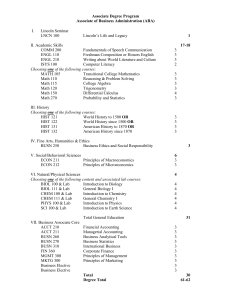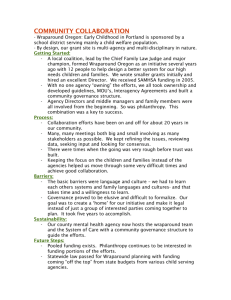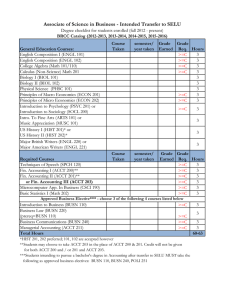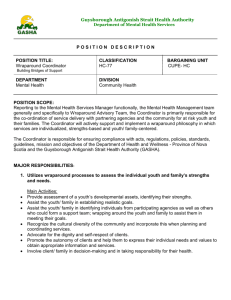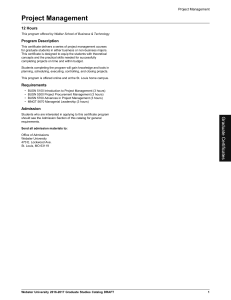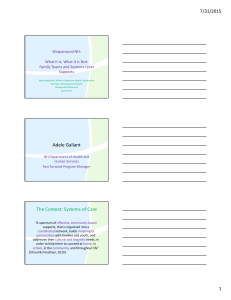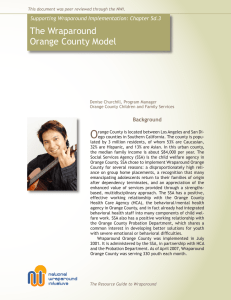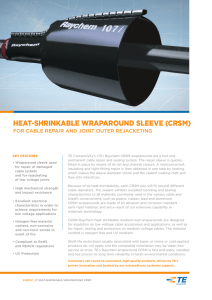Operation and Assessment of Wraparound Models for Student Acquisition of
advertisement
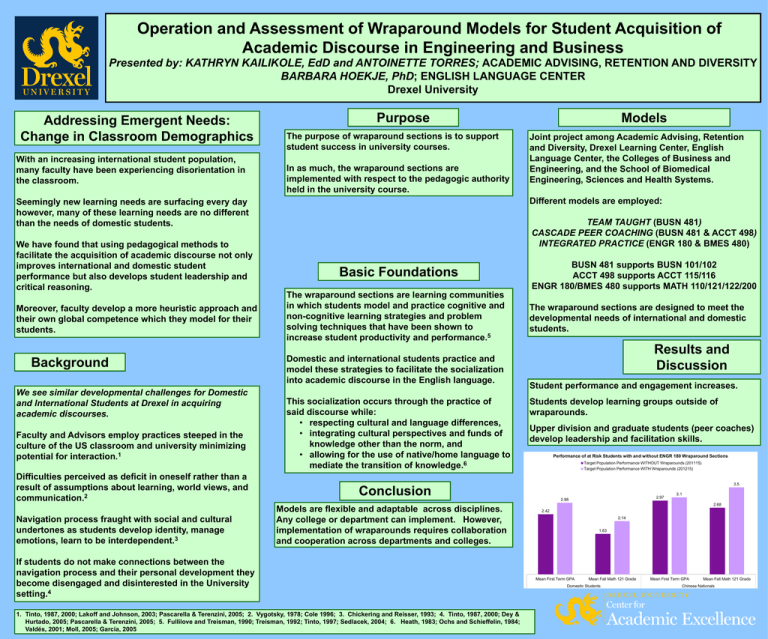
Operation and Assessment of Wraparound Models for Student Acquisition of Academic Discourse in Engineering and Business Presented by: KATHRYN KAILIKOLE, EdD and ANTOINETTE TORRES; ACADEMIC ADVISING, RETENTION AND DIVERSITY BARBARA HOEKJE, PhD; ENGLISH LANGUAGE CENTER Drexel University Addressing Emergent Needs: Change in Classroom Demographics With an increasing international student population, many faculty have been experiencing disorientation in the classroom. Purpose The purpose of wraparound sections is to support student success in university courses. In as much, the wraparound sections are implemented with respect to the pedagogic authority held in the university course. Moreover, faculty develop a more heuristic approach and their own global competence which they model for their students. Background We see similar developmental challenges for Domestic and International Students at Drexel in acquiring academic discourses. Faculty and Advisors employ practices steeped in the culture of the US classroom and university minimizing potential for interaction.1 Difficulties perceived as deficit in oneself rather than a result of assumptions about learning, world views, and communication.2 Navigation process fraught with social and cultural undertones as students develop identity, manage emotions, learn to be interdependent.3 Joint project among Academic Advising, Retention and Diversity, Drexel Learning Center, English Language Center, the Colleges of Business and Engineering, and the School of Biomedical Engineering, Sciences and Health Systems. Different models are employed: Seemingly new learning needs are surfacing every day however, many of these learning needs are no different than the needs of domestic students. We have found that using pedagogical methods to facilitate the acquisition of academic discourse not only improves international and domestic student performance but also develops student leadership and critical reasoning. Models TEAM TAUGHT (BUSN 481) CASCADE PEER COACHING (BUSN 481 & ACCT 498) INTEGRATED PRACTICE (ENGR 180 & BMES 480) Basic Foundations The wraparound sections are learning communities in which students model and practice cognitive and non-cognitive learning strategies and problem solving techniques that have been shown to increase student productivity and performance.5 Domestic and international students practice and model these strategies to facilitate the socialization into academic discourse in the English language. This socialization occurs through the practice of said discourse while: • respecting cultural and language differences, • integrating cultural perspectives and funds of knowledge other than the norm, and • allowing for the use of native/home language to mediate the transition of knowledge.6 BUSN 481 supports BUSN 101/102 ACCT 498 supports ACCT 115/116 ENGR 180/BMES 480 supports MATH 110/121/122/200 The wraparound sections are designed to meet the developmental needs of international and domestic students. Results and Discussion Student performance and engagement increases. Students develop learning groups outside of wraparounds. Upper division and graduate students (peer coaches) develop leadership and facilitation skills. Performance of at Risk Students with and without ENGR 180 Wraparound Sections Target Population Performance WITHOUT Wraparounds (201115) Target Population Performance WITH Wraparounds (201215) 3.5 Conclusion Models are flexible and adaptable across disciplines. Any college or department can implement. However, implementation of wraparounds requires collaboration and cooperation across departments and colleges. If students do not make connections between the navigation process and their personal development they become disengaged and disinterested in the University setting.4 1. Tinto, 1987, 2000; Lakoff and Johnson, 2003; Pascarella & Terenzini, 2005; 2. Vygotsky, 1978; Cole 1996; 3. Chickering and Reisser, 1993; 4. Tinto, 1987, 2000; Dey & Hurtado, 2005; Pascarella & Terenzini, 2005; 5. Fullilove and Treisman, 1990; Treisman, 1992; Tinto, 1997; Sedlacek, 2004; 6. Heath, 1983; Ochs and Schieffelin, 1984; Valdés, 2001; Moll, 2005; García, 2005 2.97 2.88 3.1 2.68 2.42 2.14 1.63 Mean First Term GPA Mean Fall Math 121 Grade Domestic Students Mean First Term GPA Mean Fall Math 121 Grade Chinese Nationals
